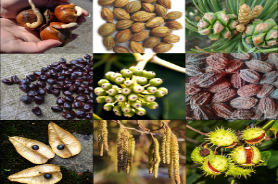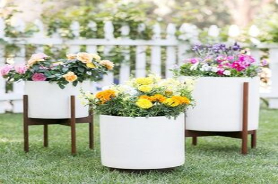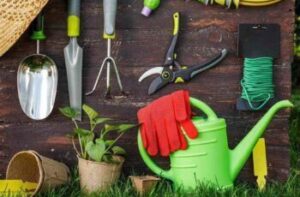Heliconia rostrata, commonly known as Hanging Lobster Claw or False Bird of Paradise, is a stunning tropical plant belonging to the Heliconiaceae family. Native to Central and South America, this perennial herbaceous plant is admired for its vibrant, pendulous bracts that resemble the claws of a lobster, hence the name.
Physical Appearance:
Heliconia rostrata can reach heights of 6 to 10 feet (1.8 to 3 meters) and forms clumps of large, banana-like leaves. The leaves are glossy, lance-shaped, and can grow up to 8 feet (2.4 meters) in length. From the center of the leaf clumps, long, erect flower stalks emerge, bearing clusters of showy, pendant bracts.
Flowers:
The most striking feature of Heliconia rostrata is its colorful bracts, which are typically bright red or orange with yellow tips. The bracts can be up to 12 inches (30 centimeters) long and have a distinct curvature, resembling the shape of a lobster’s claw. The true flowers are small and inconspicuous, nestled within the bracts.
Cultural Requirements:
Heliconia rostrata thrives in warm, tropical climates and prefers partial shade to filtered sunlight. It requires well-draining, fertile soil and regular watering to keep the soil consistently moist. High humidity is essential for optimal growth. This plant can also tolerate periodic flooding, making it suitable for planting near water features.
Uses:
1. Ornamental Purpose: Heliconia rostrata is highly valued as an ornamental plant for its eye-catching bracts, making it an ideal choice for tropical gardens and landscapes.
2. Cut Flowers: The striking bracts of Heliconia rostrata are commonly used in floral arrangements and tropical-themed bouquets.
3. Wildlife Attraction: The nectar-rich bracts attract hummingbirds and other pollinators, enhancing biodiversity in the garden.
4. Erosion Control: The extensive root system and clumping habit of Heliconia rostrata make it effective for controlling soil erosion on slopes and riverbanks.
Note: Heliconia rostrata can be sensitive to cold temperatures and may require protection or be grown in containers in regions with frost. The plant’s leaves can become tattered or scorched if exposed to strong winds or excessive sunlight. Regular pruning of old or damaged leaves can help maintain the plant’s appearance and vigor. As with many tropical plants, Heliconia rostrata can be susceptible to pests like aphids and mites, so regular inspection and appropriate pest management may be necessary.











Reviews
There are no reviews yet.